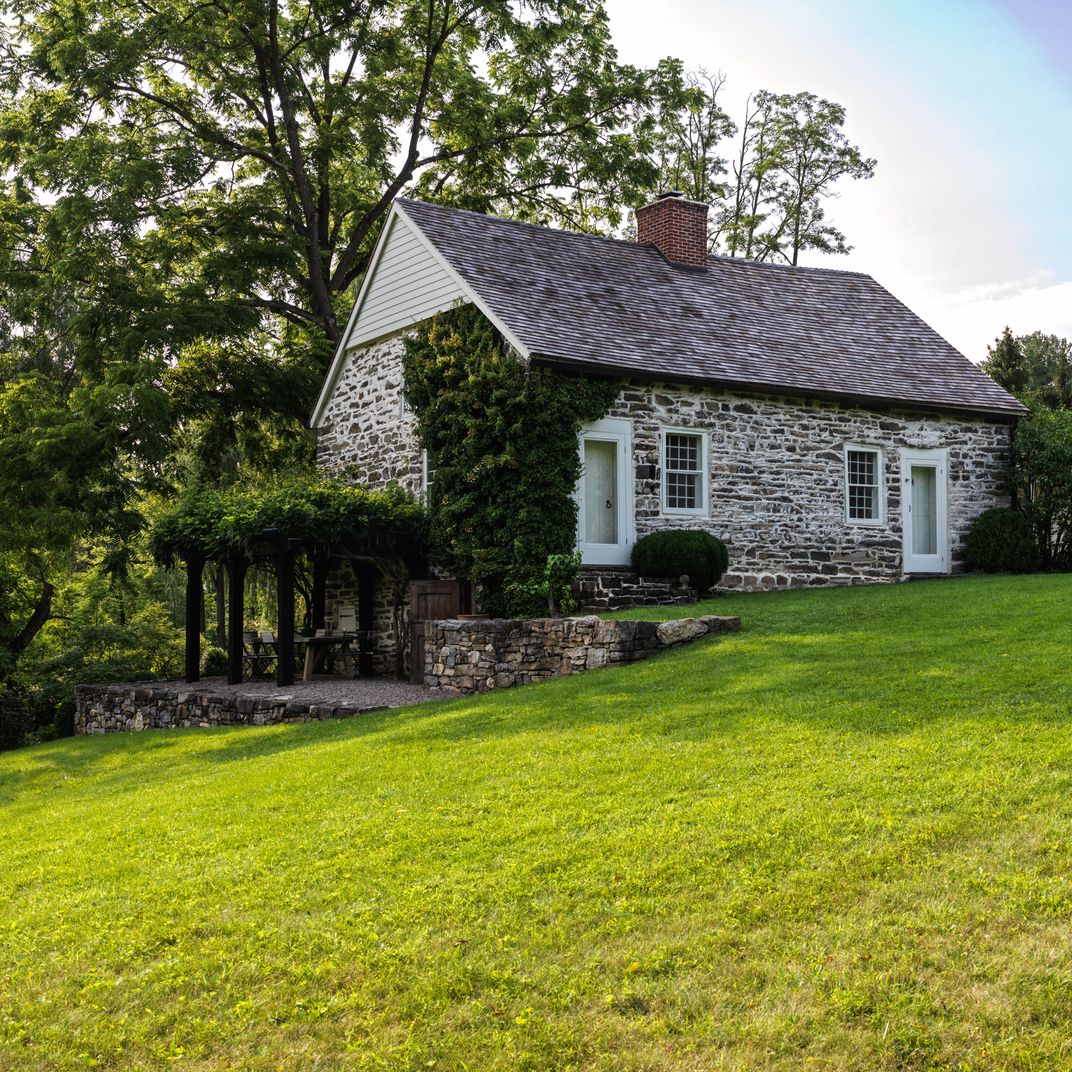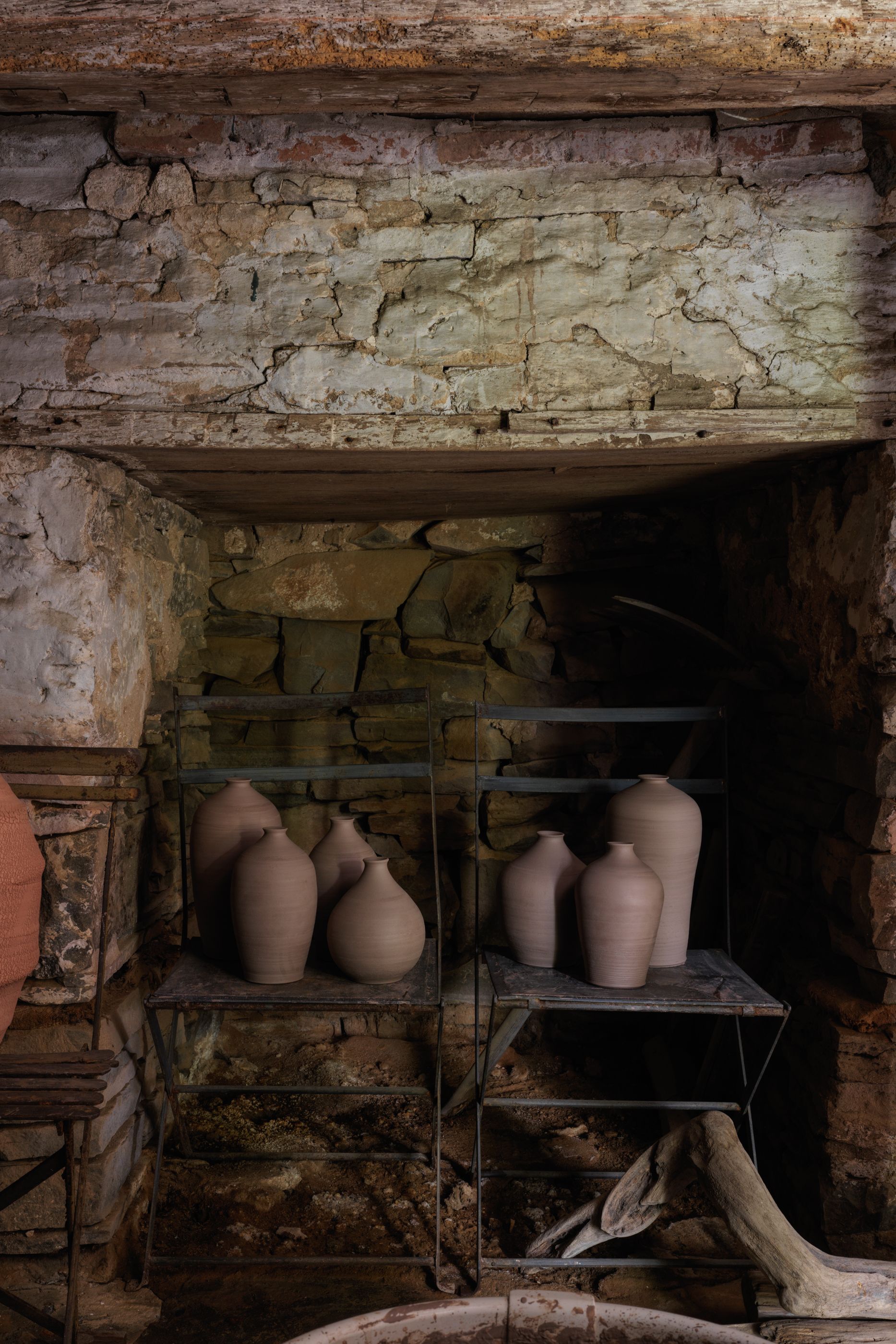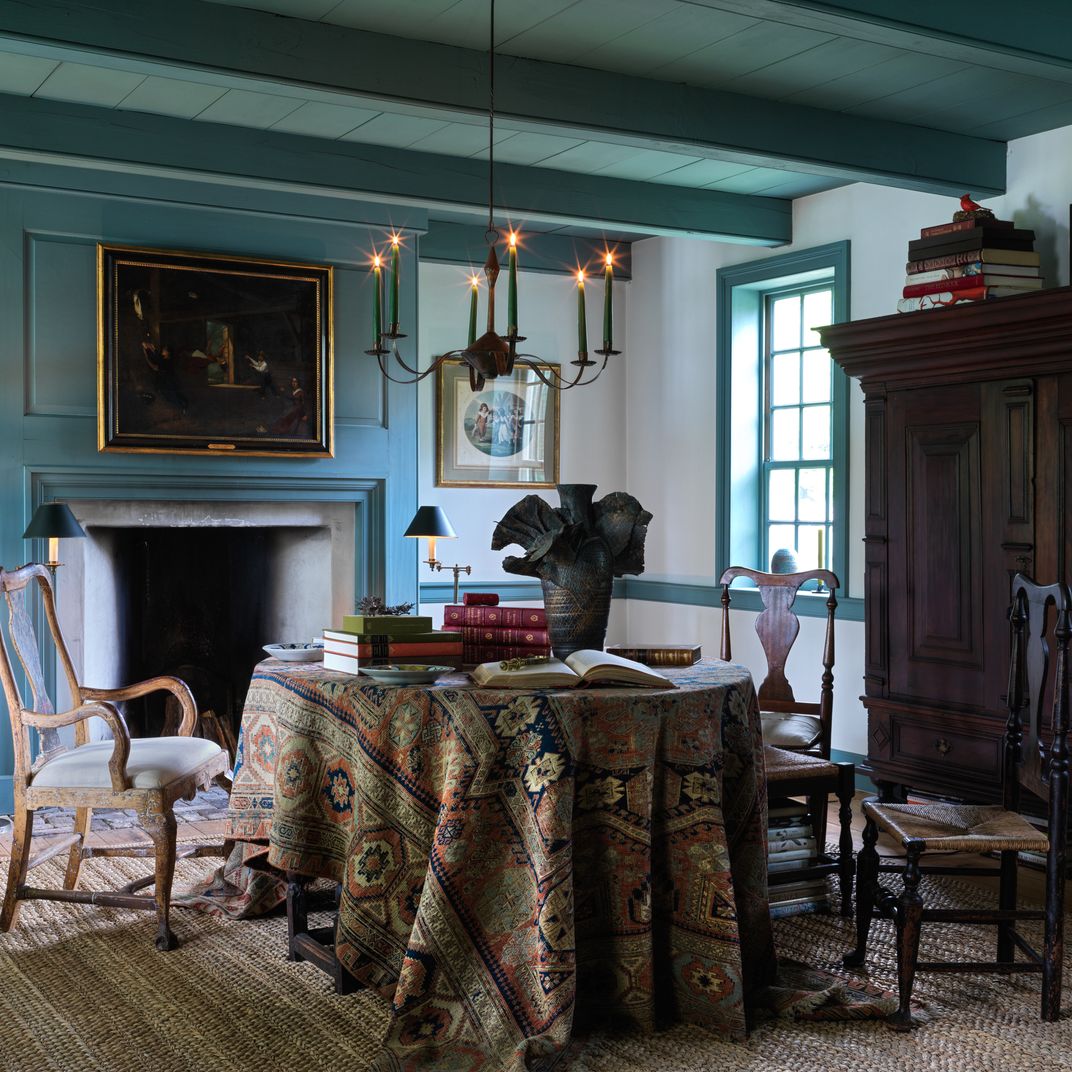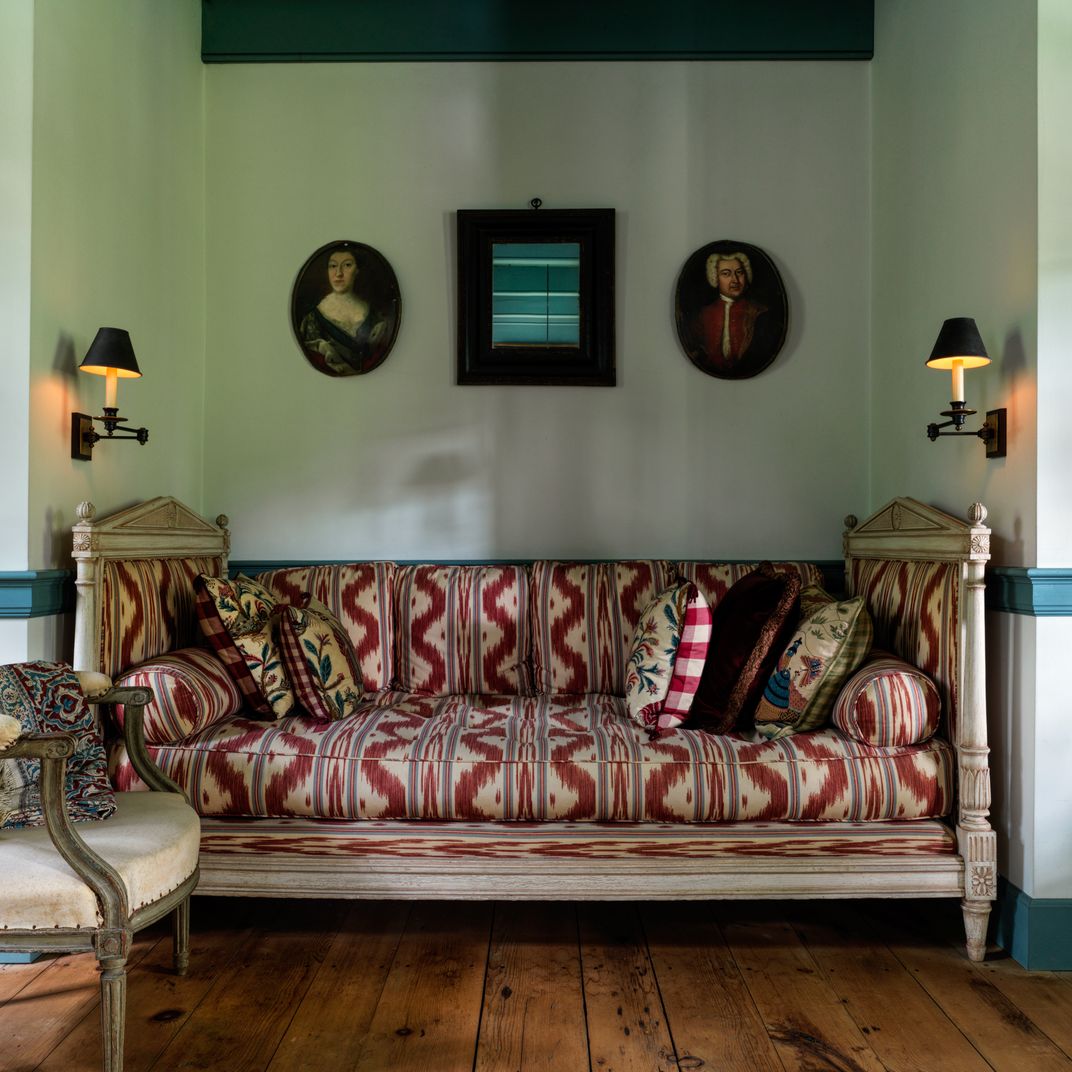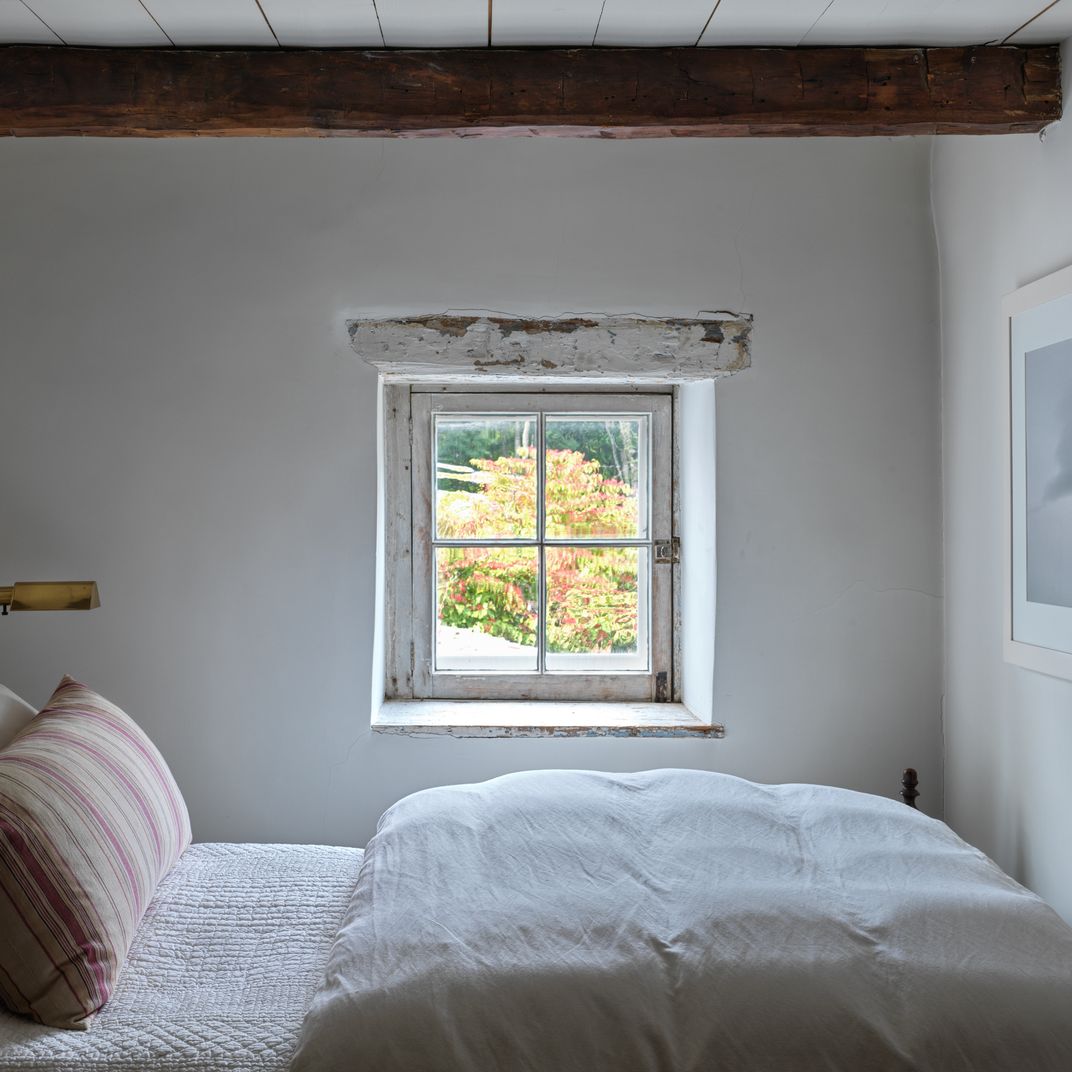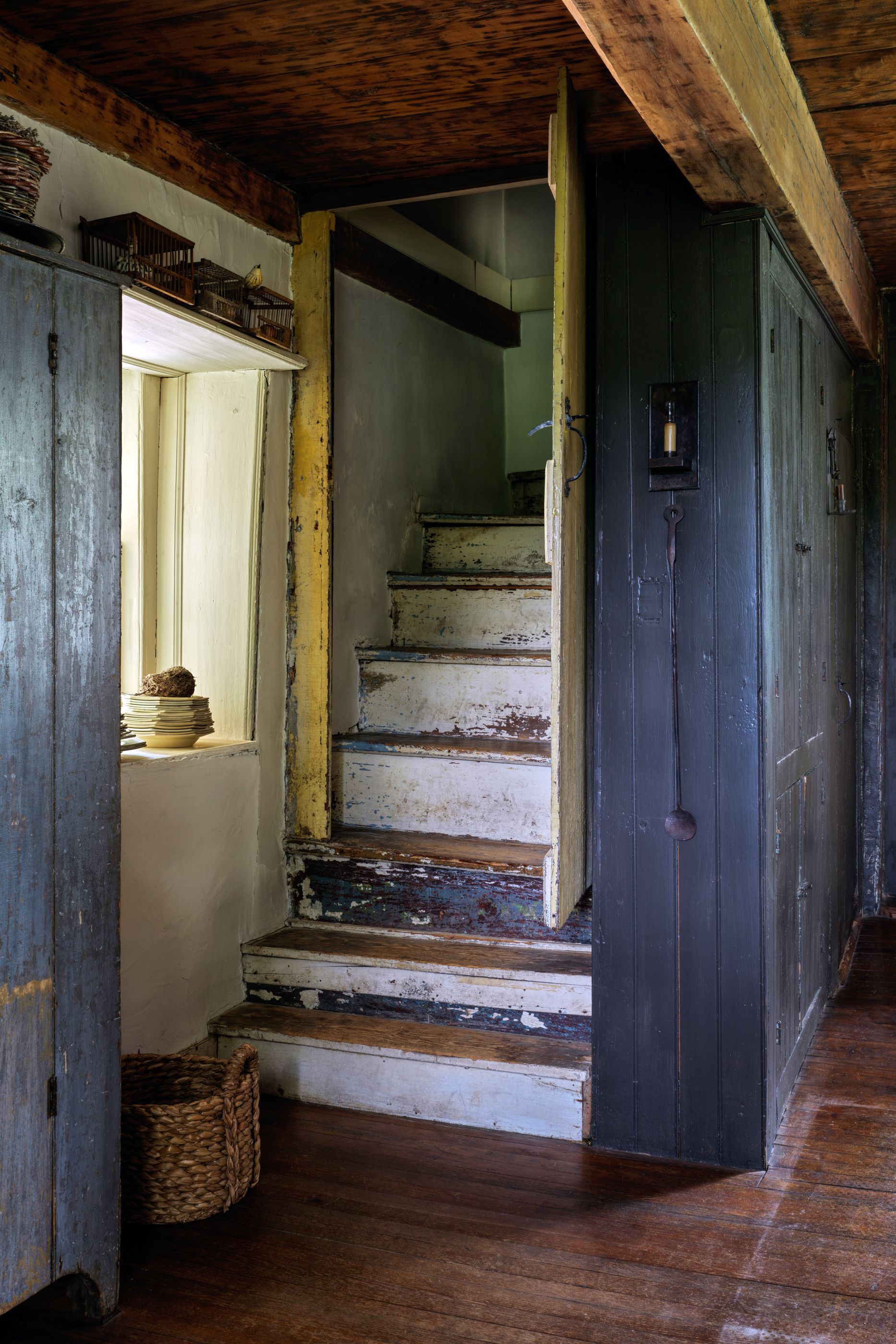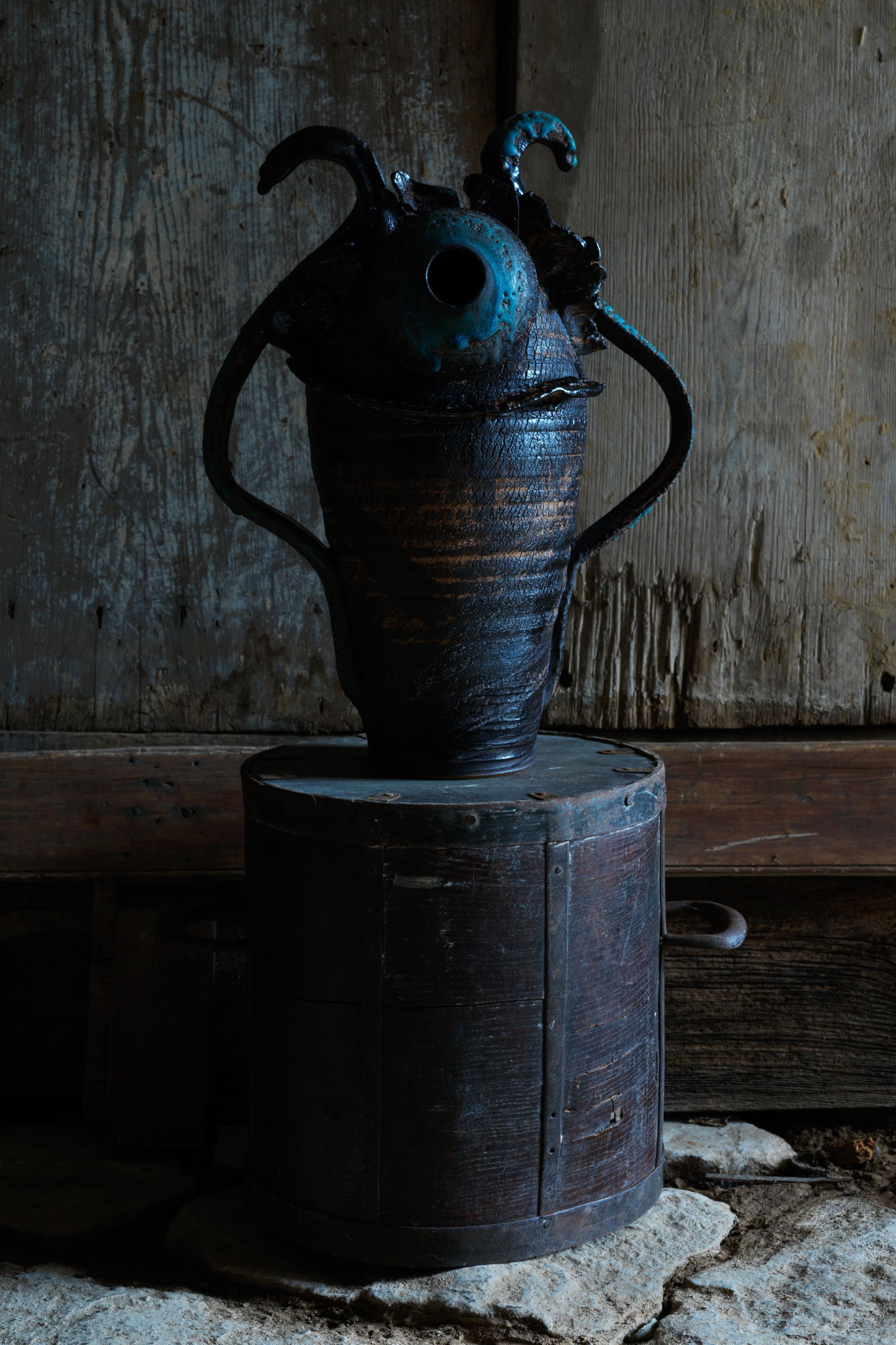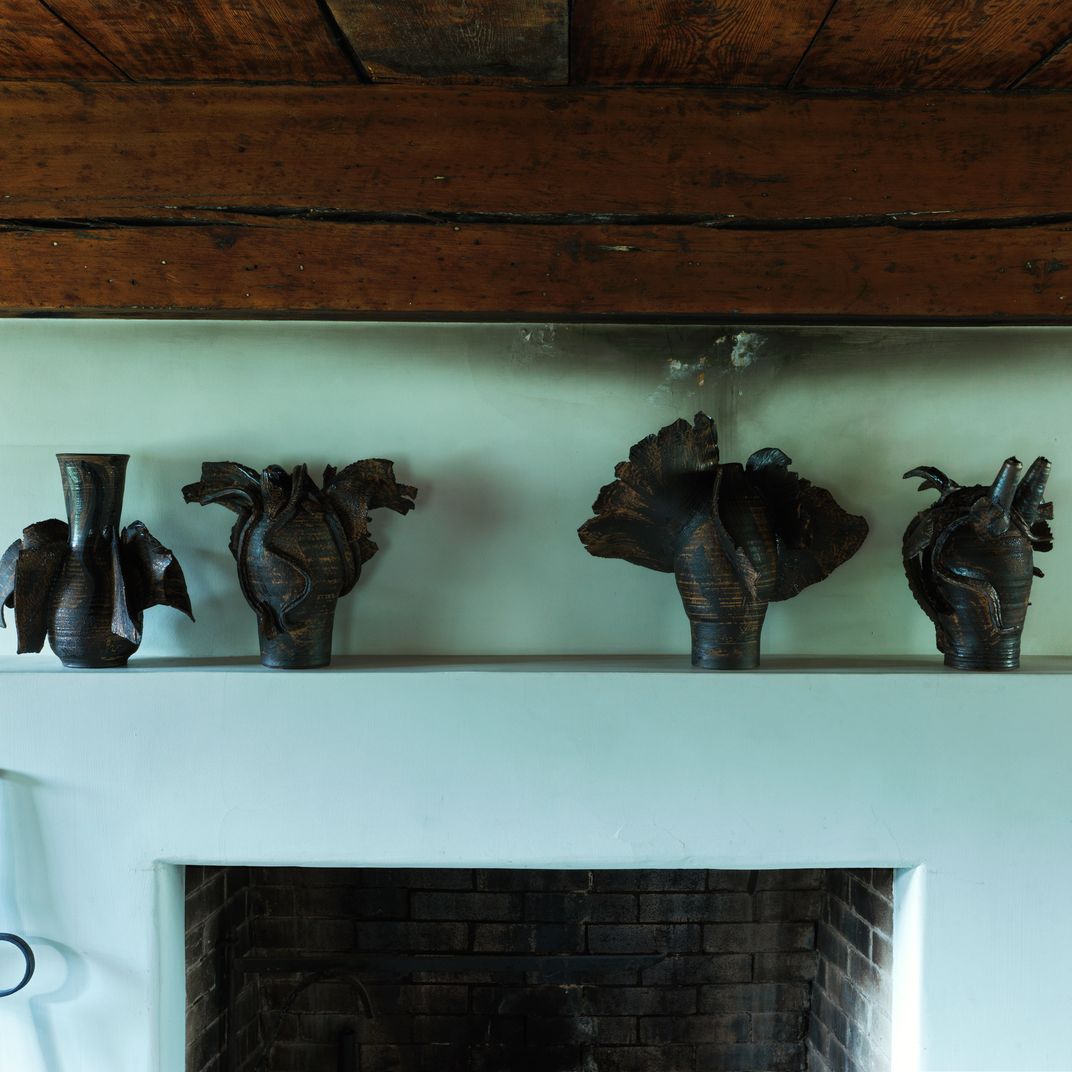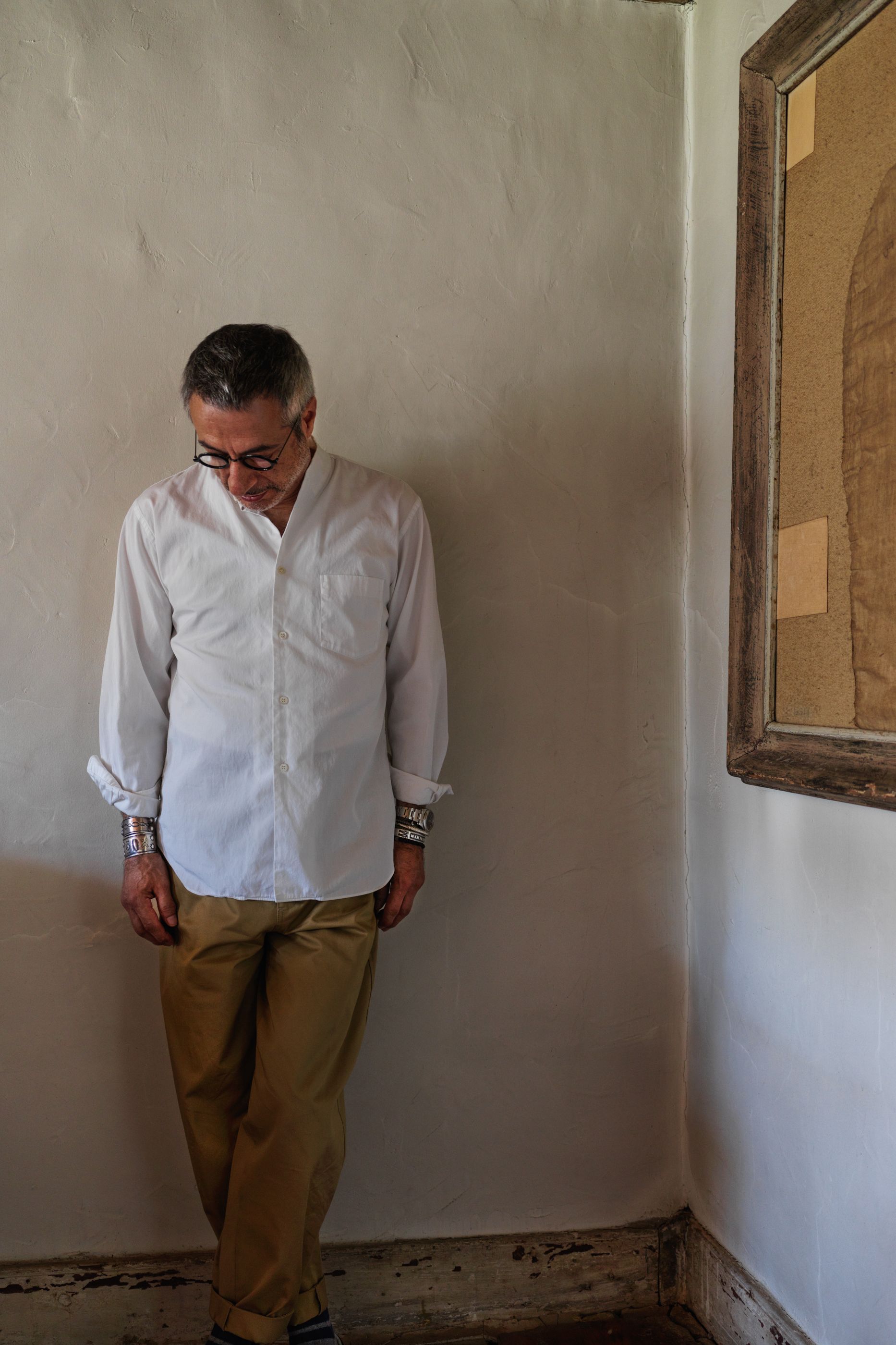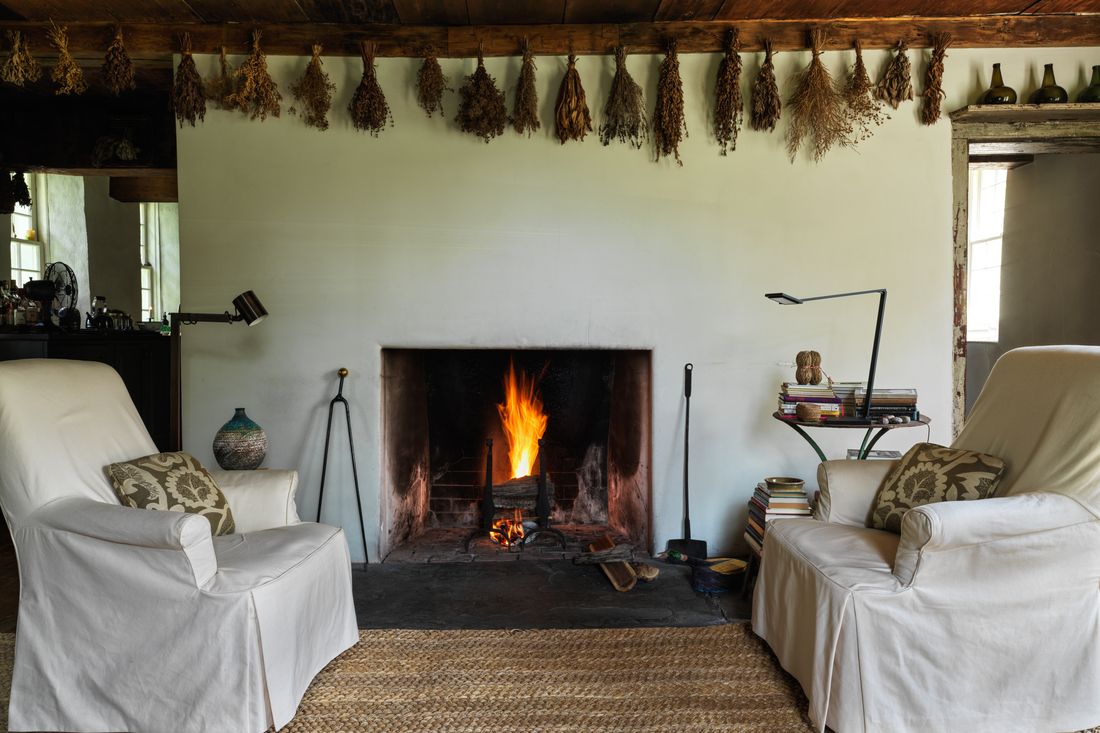
They must have been very tall,” Robert Turner says of the original owners of this nearly 300-year-old stone house overlooking a creek in the Hudson Valley that he and his partner, Peter Speliopoulos, bought three decades ago. “Because normally in these Dutch houses, I hit my head on every beam. This one has unusually high ceilings.”
Turner and Speliopoulos were slow to renovate the place beyond ridding the interior of stenciled hearts and wreaths that had been added by the previous owner and were a bit too quaint for their taste. Restoration and renovation work began in 1995 with architect Jim Joseph of Hottenroth + Joseph Architects. The couple reconfigured the second floor, carving out space in the hallway to create a guest room (which some visitors have said is haunted), and built an addition comprising a library, an entrance hall, and a second bathroom.
“There is something wonderful about preserving a historic house,” Speliopoulos says. “And yet not living in an old-fashioned way. We’ve tried to clean this up and bring it back to its original bones, preserving its spirit. It’s a very simple house, but I think it has a very beautiful quality, a soul to it.”
They foraged for antiques to decorate it in nearby Hudson and Rhinebeck as well as from dealers in New York City, picking up handsome English gateleg and Gustavian tables and a Louis XVI daybed, among other finds. Their 18th-century cabinet, known as a kas, could have been owned by the Dutch family who built the house.
Turner was a fashion editor at Vogue and fashion director at Harper’s Bazaar before going on to work with decorator David Easton; then he launched his own interior-design firm in 1995. These days, he’s focused on philanthropy, serving on the executive committee of the Metropolitan Opera board of directors and helping to support the Santa Fe Opera, Carnegie Hall, the High Line, and BAM. He also underwrote the new opera Eurydice, by composer Matthew Aucoin, which had its Met premiere November 23.
Speliopoulos, for his part, designed for Laura Biagiotti in Rome and for Christian Dior in Paris, and he was creative director for Donna Karan New York from 2002 to 2015. He has been collaborating with dancer and choreographer Karole Armitage for the past 21 years, designing costumes for her ballets. He has also been exploring ceramics for the past decade.
Their house was used for weekends and holidays until the pandemic hit and they settled in full time. Speliopoulos created a pottery studio in the cellar. The months spent there produced a body of work for his show this past summer at Les Ateliers Courbet, “Chthonic.” The title references Greek deities who inhabit the underworld “deep in the earth and who are emerging,” Speliopoulos says. “I felt like it was parallel to the life we were living in the pandemic. There was all this darkness and uncertainty and fear, and then as we started to see some light at the end of the tunnel, I felt that they were optimistic signs of rebirth.”
The terrace: Added to lower level of the house, where Speliopoulos made his studio in the cellar.
The cellar: Clay vessels in Speliopoulos’s studio.
The library: It centers on an English gateleg table covered with an antique rug from Uzbekistan.
The far end of the library features a Louis XVI daybed covered in French toile fabric; on the wall, flanking the Flemish mirror, are oval English carriage portraits painted on tin.
The guest bedroom: “Many guests who have slept in this room say that it is haunted,” says Turner.
The staircase: These stairs lead to the main bedroom and the guest bedroom on the second floor.
Speliopoulos’s artwork: Chthonic Vessel 16, slipped and glazed stoneware, is wheel-thrown with hand-built appendages.
A group of ceramic sculptures, part of Speliopoulos’s recent show “Chthonic” on a fireplace mantle.
Speliopoulos in the living room.
The terrace: Added to lower level of the house, where Speliopoulos made his studio in the cellar.
The cellar: Clay vessels in Speliopoulos’s studio.
The library: It centers on an English gateleg table covered with an antique rug from Uzbekistan.
The far end of the library features a Louis XVI daybed covered in French toile fabric; on the wall, flanking the Flemish mirror, are oval English carriage portraits painted on tin.
The guest bedroom: “Many guests who have slept in this room say that it is haunted,” says Turner.
The staircase: These stairs lead to the main bedroom and the guest bedroom on the second floor.
Speliopoulos’s artwork: Chthonic Vessel 16, slipped and glazed stoneware, is wheel-thrown with hand-built appendages.
A group of ceramic sculptures, part of Speliopoulos’s recent show “Chthonic” on a fireplace mantle.
Speliopoulos in the living room.
More Great Rooms
- The Selby’s New Book About Creatives With Kids at Home
- ‘If I Had to Leave This Place, I Would Probably Leave New York’
- I’ll Never Forget the Apartment Gaetano Pesce Did for Ruth Shuman



